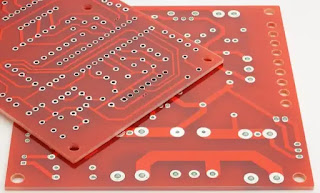Before going into the details of printed circuit boards or wiring boards, it’s important to know the meaning of circuit boards. What are they? Why they are necessary? What if they are printed? What makes the printed circuit board different from the conventional circuit boards? The answers to all these questions will be explained in this article.
Circuit boards:
A circuit board allows all electronic devices to perform essential tasks like computing, commanding, and data transfer. Its main purpose is to send signals from one component of an electronic device to other components. They are commonly used in smartphones, laptops, PCs etc.
Printed circuit boards:
Printed circuit boards or PCBs are the main functional component of all advanced electronics in today’s world. They are of several different types; single-layered, double-layered, and multi-layered. While multi-layered PCBs are the most commonly used PCBs.
- Single-layered PCBs
- Double-layered PCBs
- Multi-layered PCBs
1. Single-layered PCBs:
They are the simplest form of PCBs or very basic level Boards. In these types of boards, all the components are present on one side of the board. They consist of a single layer of a substrate material like fiberglass etc. On one side a copper foil is present and all the components of the circuit are present on that copper foil.
Pros:
- Single-layered PCBs are cost-effective.
- They are simpler and easy to design.
- They are most suitable for designing simple electronics.
Cons:
- Due to their very basic structure, they cannot be used in high-level or complicated electronics.
- They are less efficient than double or multilayered PCBs.
2. Double-layered PCBs:
As the name suggests, double-layered PCBs contain two layers of substrate materials (like fiberglass). All the components of the boards connect through some kind of holes called vias. These holes go through both layers.
Pros:
- Due to the presence of two layers, they are a bit more complex than single-layered PCBs.
- They are more compact than single-layered boards.
- Due to additional layers, interference and noise of electronics can be reduced.
Cons:
- Complexity in design due to the presence of two copper layers.
- Expensive as compared to single-layered PCBs.
3. Multi-layered PCBs:
As the name indicates, these types of boards contain multiple numbers of layers of substrate material. This material (fiberglass mostly) is sandwiched (core layer) between layered copper foils. These kinds of boards may consist of layers ranging from a minimum of three to a maximum of more than 30 layers. All the components of the board are connected. During their making, it should make sure that no flaws are present in the boards.
Pros:
- Multi-layered PCBs can handle very complex circuits.
- They are suitable for advanced electronics.
- They can be customized according to consumer preferences.
- They can be prepared from eco-friendly and non-toxic materials.
- They are more durable than other PCBs.
- Due to upgraded and complex formation, they ensure better signal transmission.
Cons:
- Multi-layered PCBs are very costly. Their complex structure requires huge budget to get them ready to be used.
- Complex PCBs are difficult to repair and require optimum expertise.
- They should be tested before installation.
Available PCBs in the market:
Among all the available PCBs in the market, one of the most commonly used boards is present on kingsunpcba.com. They have got latest PCBs, designed and manufactured with professionalism.
Choice of PCBs:
Selecting appropriate printed circuit boards for your electronics requires several considerations. A few of them are:
- How well the PCB can handle the emission of heat and its dissipation.
- There should be a good balance between the complexity of the structure, ease of manufacturing, and cost.
- The PCB should excel in maintaining signal efficiency at the utmost level.
- The PCB should be flexible enough to undergo the transition from single-layered to multi-layered or double-layered at least.
- It should be well-equipped to change manufacturing.
- It should be efficient enough to reduce the noise emission during operation/functioning.
If you are looking for a trusted place to know more about PCBs. Those PCBs should be highly efficient and made by professional people then you must learn more about printed circuit boards. Many companies are offering such PCBs, one of them being Kingsunpcb.
Conclusion:
Due to the presence of many PCBs and different companies owning further different types of printed circuit boards, it becomes difficult to select the PCB of choice. Like single-layered PCBs are suitable for simple and basic electronics. Double-layered PCBs are suitable for those electronics that pose a balance between cost and complexity. While multi-layered PCBs are required for very complex electronics requiring optimum work efficiency or sometimes missions like defense, medical aerospace, etc.
Understanding PCBs' functioning and practical utility is very important before choosing them.

